Twenty-four hours in Tajikistan’s favorite neo-Soviet bistro.
Lenin leers from every corner of the basement in one of the oldest buildings in Dushanbe, Tajikistan’s dusty capital of 800,000 souls. The Soviet leader—embroidered in gold thread on a silk banner, inked from a woodblock print, tinted on a postcard, painted on a poster—hangs manifold but silent in the Soyuz Bistro, a 24-hour stolovaya, or cafeteria.
Across from me, Qoib is loudly ripping the Soviet Union a new one. He pounds the table to make his point, almost upsetting a rapidly-cooling bowl of solyanka, a sweet-and-sour beef soup.
“Under the Soviets, we were like cows! We lived like cows! They fed us, sheltered us, shepherded us like cows.” A delivery person for the bistro, Qoib widens his eyes until his irises are swimming in a sea of white. “The whole country was a prison camp. Anyone who says he wants the U.S.S.R. to come back, I question his intelligence. I seriously question his intelligence.”
It’s 2 a.m. and I am 21 hours into the 24-hour stretch I plan to spend in this canteen. I am charting its tides, eating its fare, and interviewing its patrons, all with the goal of answering one question: how do you explain this place? How, in a country where the legacy of the Soviet Union is increasingly anathema, is it possible for the Soyuz Bistro—literally, Union Bistro—to exist as a cornerstone of everyday life in Dushanbe?
I’m wired on sugary Nescafé and syrniki, fried balls of sweetened cottage cheese. The interplay of fluorescent light, white-on-white walls, and highly-polished tile floor is positively Camus-esque. Qoib’s neat beard quivers. His vehemence and his eloquence are particularly astounding in light of the fact that out of everyone I’ve spoken to in the past 21 hours—diners, cooks, bums, government officials, shopkeepers, students, villagers—he is the only person with a bad word to say about the U.S.S.R.
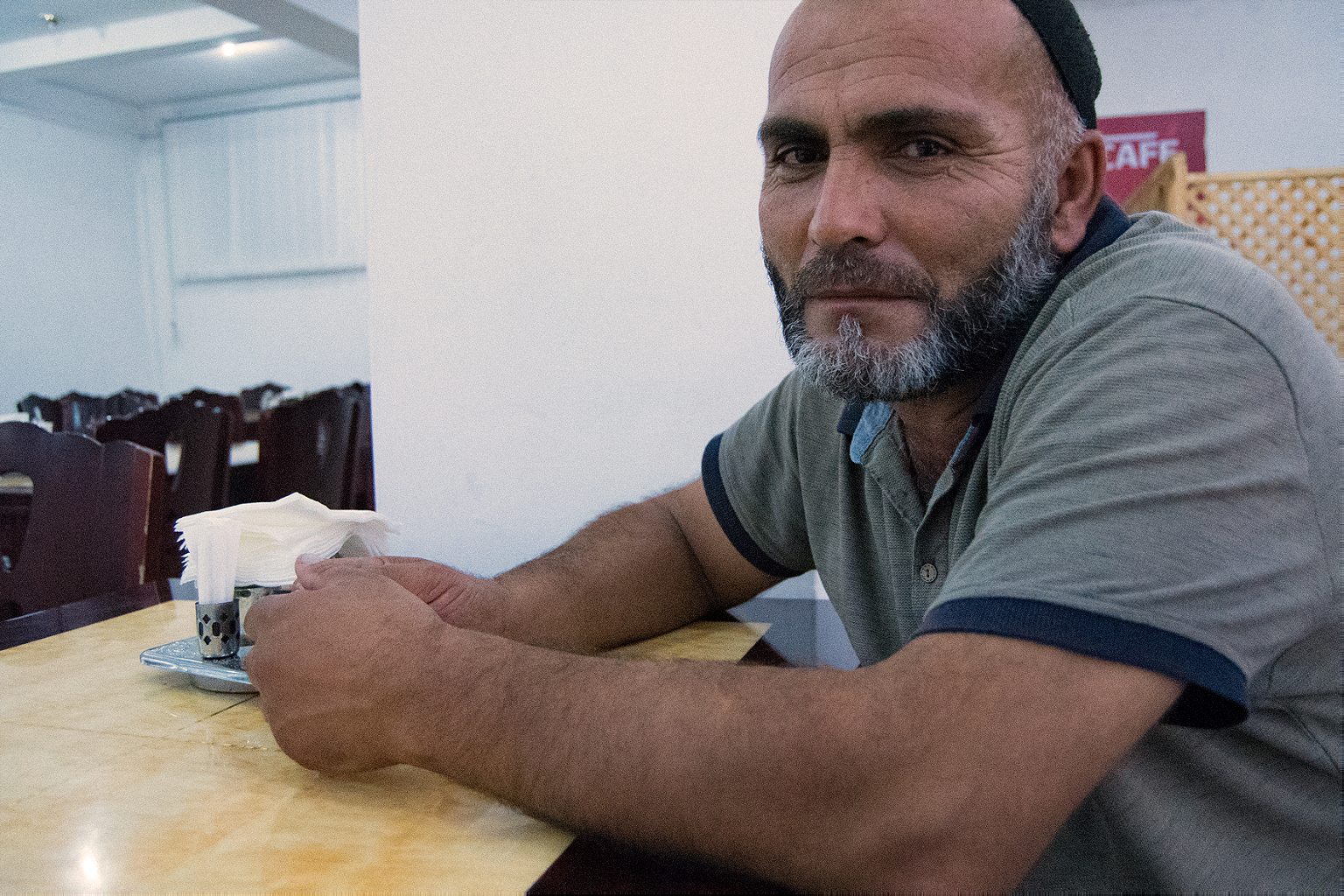
Soyuz Bistro is a special place in this sun-blasted city. Founded 12 years ago by a man named Zafar on the bones of a former Soviet canteen, the bistro’s something of a landmark for Dushanbinci, as the city’s residents are called. It’s hard to find someone who hasn’t been here.
And while ironic Soviet kitsch may be big business in parts of the world—especially Russia, where Gorky Park hipsters sport ironic net bags in the tradition of Soviet babushkas—that’s not the case in Tajikistan. There are no students framing Brezhnev posters, no breathing wax figures of Lenin, no kids decked out in U.S.S.R. apparel. This isn’t to say Tajikistan is empty of Soviet ephemera; far from it. Reminders of the Soviet era are omnipresent, but they are far from ironic.
In order to become kitschy, things need to fall so totally out of style that they are subsumed into a black hole of their own tackiness, from which they emerge decades later, crystallized in cult appeal. But a lot of the quotidian stuff that made up the texture of Soviet life never fell out of use in Tajikistan.
Supermarkets never stopped carrying U.S.S.R.-brand ice cream. Billboards exhorting national unity never came down. And restaurants never stopped dishing out Soviet food. Zafar’s choice of décor is totally devoid of irony. The way he tells it, Soyuz runs on unadulterated nostalgia.
“It was a better time, at the beginning of the Soviet Union,” he tells me. “Now, you need to have money to do anything, you need documents to travel. Back then, it was all easier. Maybe some of our patrons will look at these posters and be reminded of how it was.”
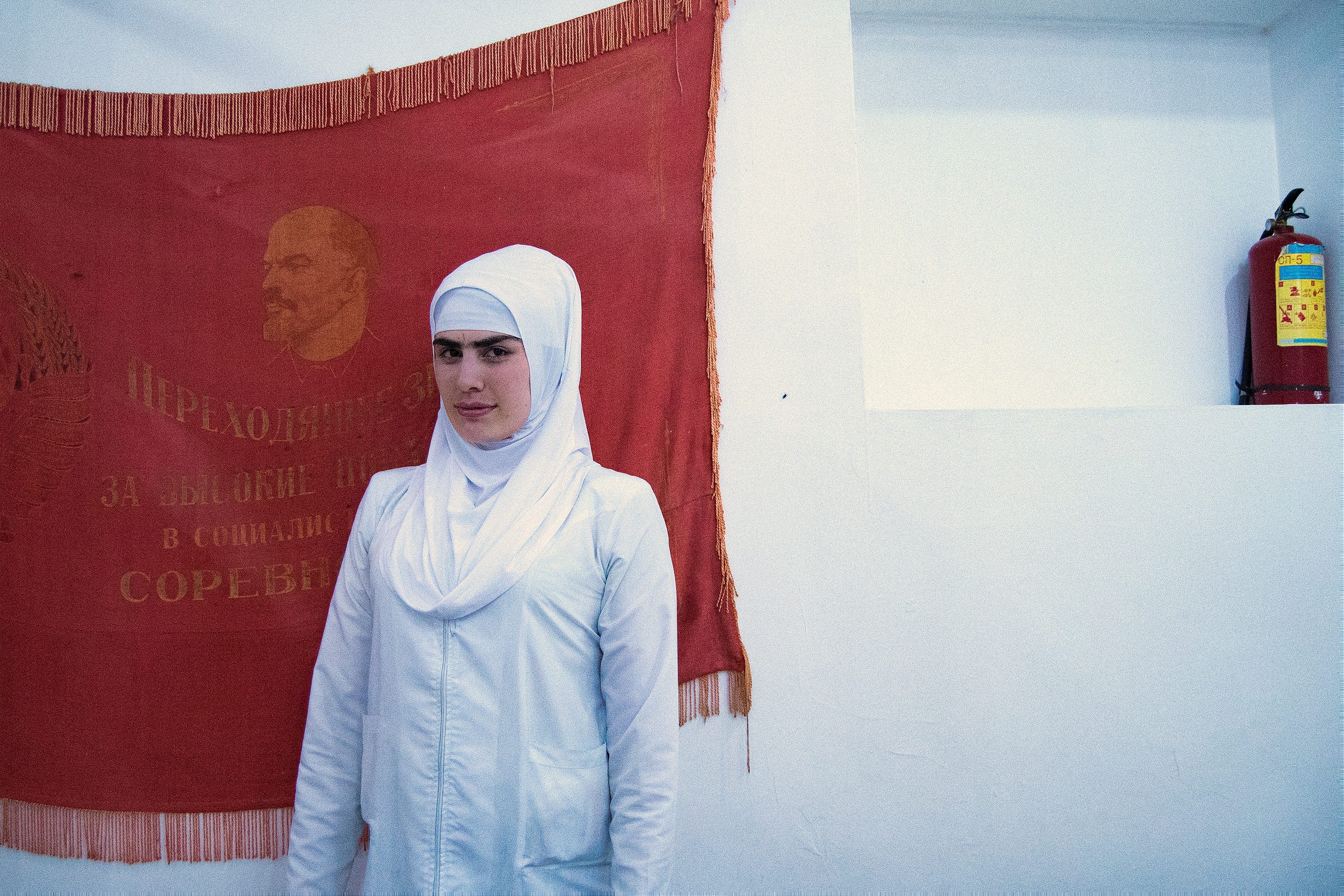
5 a.m. A slight man in a collared shirt picks his teeth in time to an Iranian music video. A night cook re-plasters the walls. The trowel sighs grittily; the television emits a canned croon.
This place, like every place, has its rhythms. It has its regular customers—I see many people multiple times over 24 hours—and its regular loiterers. It’s never full, except at lunch, when the communal tables are crowded with government employees and university students, but it’s never empty, either. In the evenings, families chase after adventuresome toddlers; at night, late-shift policemen clutch tiny, red cups of Nescafé in their beefy fists. Bussers in pressed white hijab-and-gown combos mop the floors with bleach every few hours.
Soyuz’s main draw has nothing to do with the Soviet atmospherics but a lot to do with a Soviet approach to dining. I’m assured by everyone that they’re here because it’s cheap, nourishing, and scrupulously clean. You can get a four-course meal for the equivalent of three dollars. It won’t be anything to write home about. Chunky alyonka salad with crab stick and potato in a cut-glass bowl; briny borscht like your grandmother made it, clogged with hearty chunks of cabbage and tender beets and maybe a couple pieces of beef if you’re lucky, ladled from a steaming three-gallon vat; breaded shredded-chicken cutlet topped with a tomato slice and mayonnaise swirl, hot out of the microwave; a slab of chocolate cake, wafery layers fused with saccharine-sweet caramel sauce. But it will fill you up without making you sick.

The décor is an afterthought for diners here. But in increasingly authoritarian Tajikistan, it’s an afterthought with political overtones. Zafar’s wistfulness for the Soviet Union is a popular attitude in Tajikistan, which declared independence from the U.S.S.R. in 1991. In a 2013 Gallup poll, more than 50 percent of Tajiks reported that the fall of the Soviet Union had led to more harm than good.
That poll is not particularly popular with the post-Soviet Tajik government, which would be happy if Tajiks did not prefer the old corrupt, top-heavy police state to their new regime. Over the past decade, the government has embarked on an increasingly overt campaign to efface the nation’s Soviet past and to disparage what cannot be erased. Tajikistan’s president-for-life takes every opportunity to remind citizens how lucky they are to be free of the U.S.S.R. The teaching and use of Russian has been officially and unofficially restricted in favor of Tajik. In the past five years, the government has remade Dushanbe’s skyline, demolishing neo-classical Soviet edifices to make way for gaudy high-rises. Officials claim they’re trying to reboot the city’s crumbling infrastructure, but Dushanbinci see the redevelopment of the urban center as an attempt to strengthen the government’s version of what it means to be Tajik by removing architectural traces of the U.S.S.R.
But many ordinary Tajiks would argue that their experiences in the Soviet Union are very much a part of their identity. And that’s where Soyuz Bistro comes in.
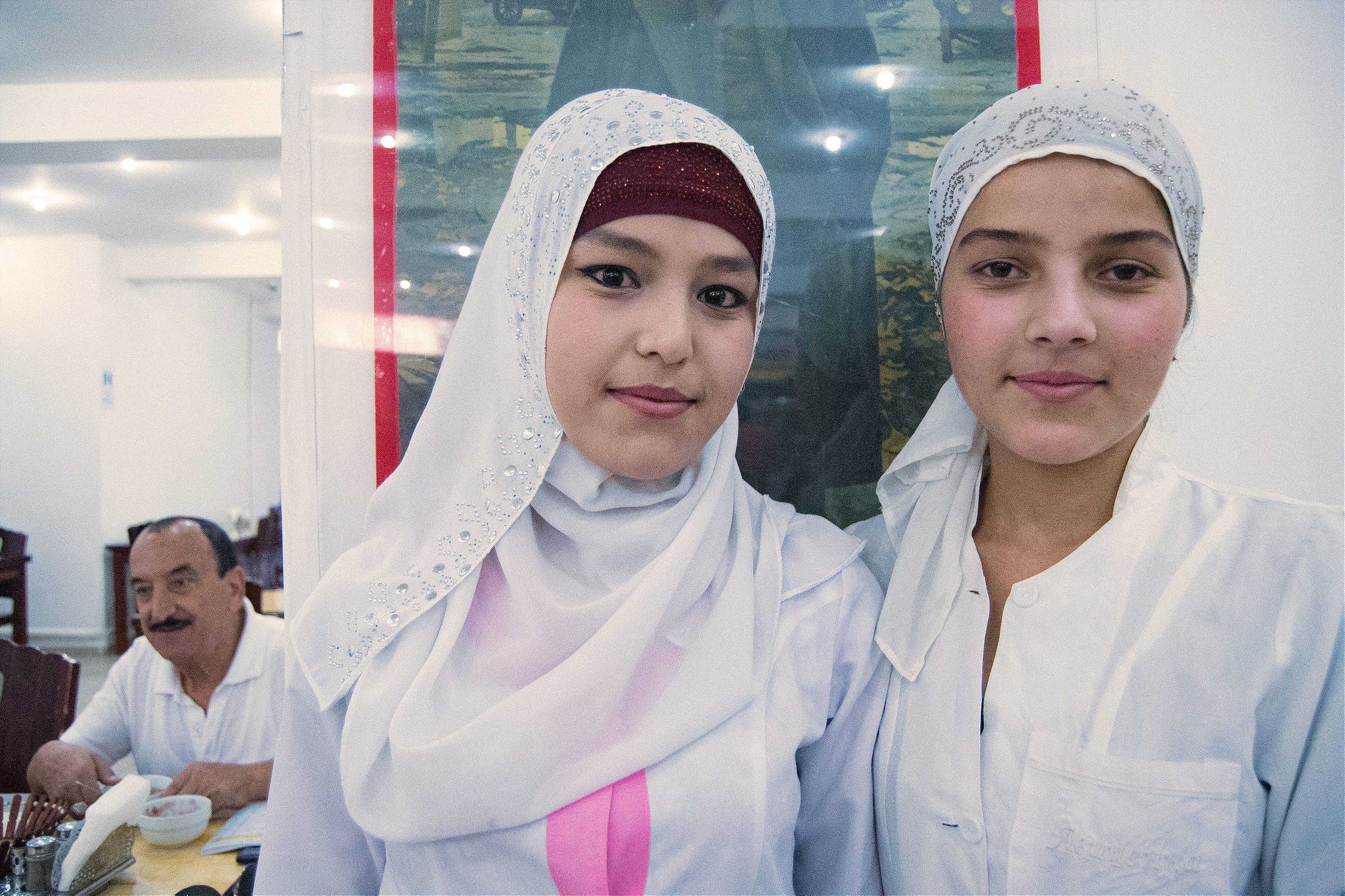
12 p.m. Like many Tajiks in Dushanbe, Davron struggles to speak Tajik. Every 10 or 12 words, he’ll dip into Russian for a technical term and stay there for a clause or a paragraph. I keep reminding him: please, I don’t speak Russian, only Tajik. His thick slice of yeasty sourdough turns an instant magenta as he sops up some borscht, thinking hard on how to talk around what sound to me like sibilant holes in his sentences.
“I grew up in Nurek, while the dam”—the second-tallest man-made dam in the world—“was being built. People from 57 nations worked on that dam, but mostly Russians,” he says. “I was 16 [in 1980] when the construction was over, and once the Soviet Union crumbled, the Russians mostly left… but I grew up with those Russians. They shaped me, shaped the way I think.”
He says he worked in Russia for a while, as a trucker. Now he heads one of the top agencies in the Ministry of Justice.
Sitting two seats away at one of the diner’s communal tables is Sabohat, washing down old candies with a teapot of hot water. She only has one front tooth and it protrudes over her sun-polished brown lips. Davron gives her his plate of torpedo-sized meatballs and silky buttered rice before he heads back to work.
Sabohat’s traveled from a village in the south to Dushanbe with her son, seeking treatment for his brain tumor. “Back then”—during the Soviet era—“doctors were free. Now, I’ve had to ask for so much money in my village [to pay for his hospital bills] my neighbors won’t even look at me.” She slices into the meatball with great dignity.
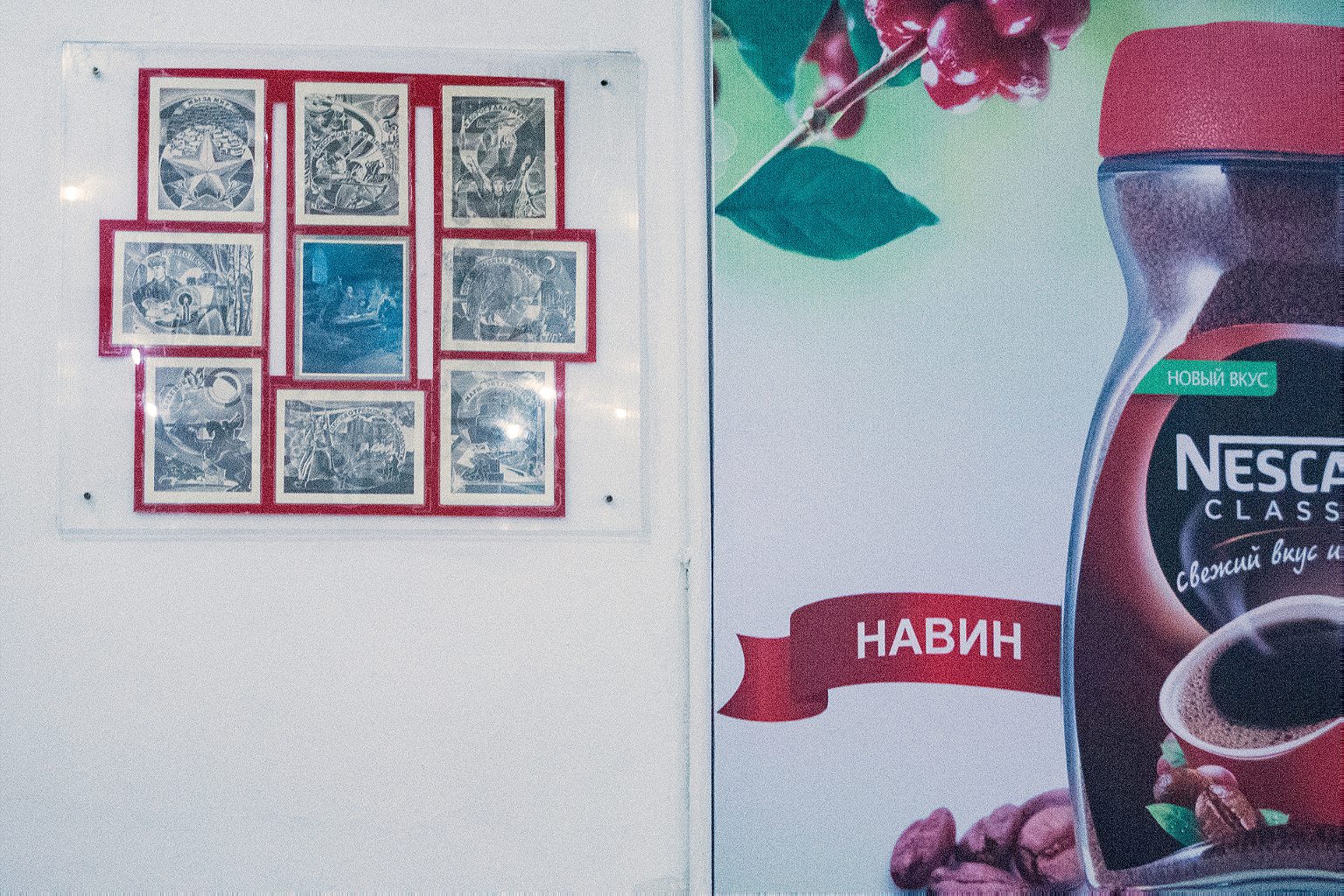
1 p.m. At Soyuz, one encounters interlocking stories of survival and despair from people slurping rasolnik, thick barley soup garnished with dill and sour cream, at adjacent tables. Dilbar has been trying without success to secure welfare payments from the state since 1999, when her husband was paralyzed; he fell from their apartment’s fourth-story window trying to fight off burglars. “You have to pay someone to get welfare payments—can you imagine that?” she asks. “Even if I knew who to bribe, I don’t have any money! That’s why I want welfare in the first place!”
A handful of minutes later, her vacated seat is occupied by Jabor, an employee of the Welfare Agency. “Excuse me, ex-employee,” he corrects me when I ask about his work there. “Now I work for Tianshi. Li Jinyuan! The King of Calcium Supplements!” I’m lost, and he grabs my notebook and pen to illustrate, his tin-and-rhinestone ring flashing. He traces the numbers 6-3-2 with adolescent concentration. “This was my monthly salary at the Welfare Agency,” he says (about 90 dollars). “Now, if I get to Eight Stars”—he draws eight stars—”with Tianshi, they’ll give me $1,000 per month and a villa, and a life insurance policy. All I have to do is recruit…”
Clarity. I draw a big triangle under his 632 and ask him if he knows what a pyramid scheme is. “Well, yes, but it’s all legal!”
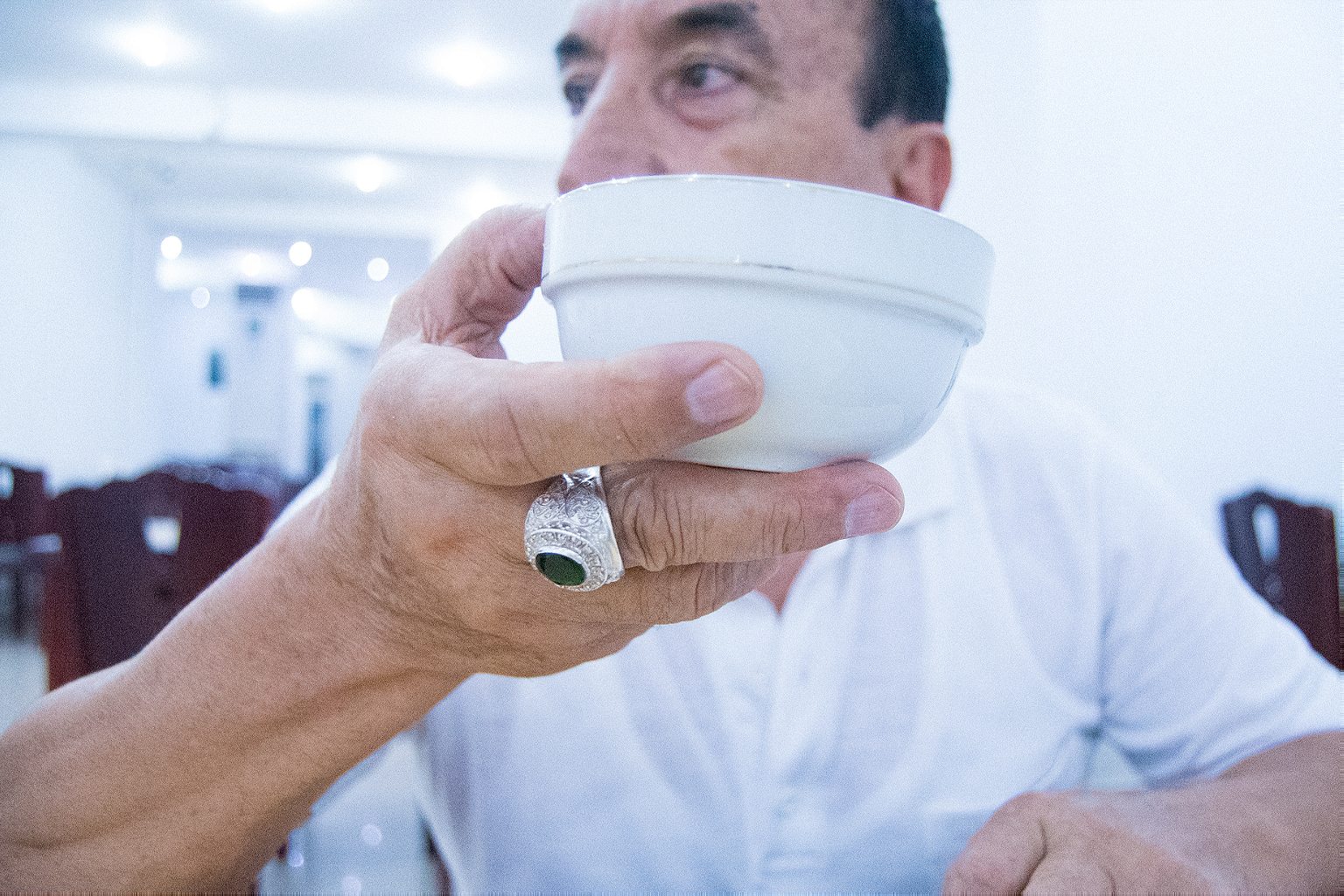
4 p.m. One family—mother, father, four children—pass around a three-liter, ruby-red jar of aromatic peach kompot, or fruit juice, at a corner table. I contemplate possibilities for Soyuz meals composed around monochromatic palettes. Red: kompot, borscht, and a cottage-cheese patty with raspberry jam. Brown: buckwheat, liver, and black tea. Yellow: pasta, schnitzel, apricot juice. White: rice, Olivier salad, chicken goulyash, milk.
The food here is both the whole point and completely beside the point. Stolovaya—Soviet state-owned canteens—were based on industrial assembly-line logic, in which a well-fed worker was the final product. In the U.S.S.R., every kompleksny obed (full lunch) in every canteen represented the latest advances in nutritional science. The Central Administration of Restaurants and Cafés, which had complete control over virtually every cafeteria in the Union, designed every recipe of every menu of every week down to the last calorie. Workers were conveyed to station one to acquire drink and dessert; station two presents hors d’oeuvres (a panoply of mayonnaise-y salads); station three, soup; station four, “solid” (meat) and “garnish” (grain). Lunchtime.
And while there were plenty of hedonists among the nomenklatura of the U.S.S.R.’s elite classes, for the most part, officials agreed that the sybaritic pleasures of haute cuisine were an “anachronism of the bourgeois past,” according to one Soviet cookbook author. The food served in state-owned cafeterias had one overriding purpose: fuel the worker with maximum efficiency.
That’s not to say, however, that Soviet workers were slurping down the equivalent of Soylent at every meal. For one, food scientists recognized that a well-spiced, diverse spread sparked appetites and improved nutrient intake. State-mandated menus began incorporating regional dishes from the satellite S.S.R.s with remarkable alacrity: Tajik lamb kabobs graced canteen chafing dishes as early as the late 1930s. Soviet cuisine was also shaped by a paradoxical duo of forces. On the one hand was the desire to prove that residents of the U.S.S.R. did not live in a “barracks culture” devoid of luxury; on the other, the very tangible reality of food shortages. The Central Administration of Restaurants and Cafés needed to design menus that gave the appearance of extravagance, but were simultaneously nourishing, tasty, and cook-able in conditions of scarcity.
From this cultural rictus emerged the reliable canteen standards: well-salted, uncomplicated, ubiquitous dishes. Chicken cutlet four different ways, gamey cured mutton, liver goulyash in syrupy gravy, macaroni with chuck, braised cabbage, runny powdered potatoes. Stringy beef pan-fried until it’s chewable, smoked freshwater fish, gritty oatmeal kasha with salt and butter, bitter steamed buckwheat. Eat it, and get back to work.
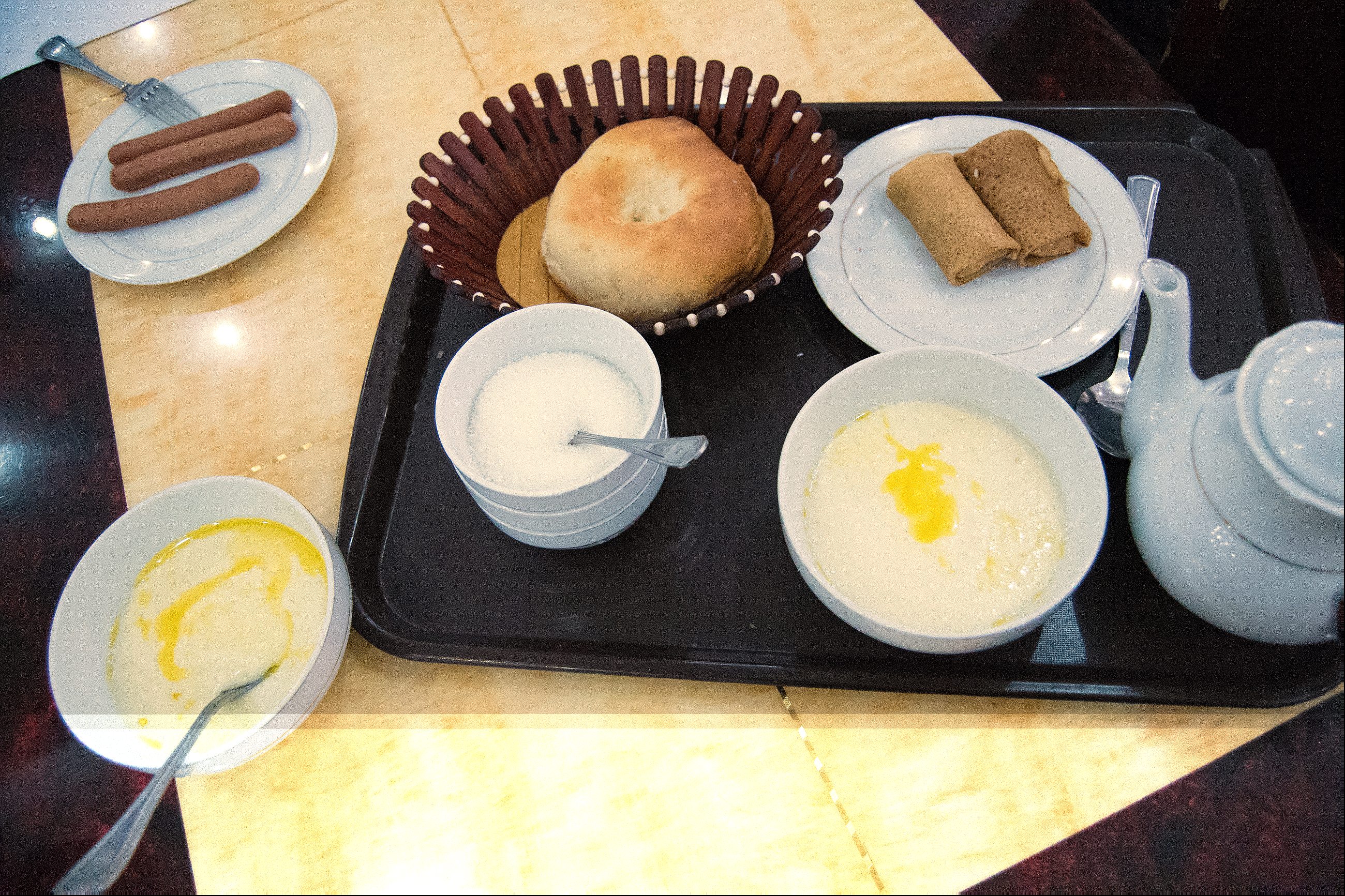
7 p.m. Sarboz, an employee of the state-owned electric company, extracts the spine from his smoked trout—sticky and caramelized on the outside, sweet, tender, and brackish inside—wipes his fingers, sighs, and looks up as if appealing for guidance.
“I’ll explain it to you very simply. Lenin founded the Soviet Union, and when he founded it everyone was equal. In Soyuz Bistro, in this restaurant, everyone can come, and no matter who they are, eat the same food, and sit in the same place, and be equal.”
In the course of 24 hours here, I have met people from almost every segment of Tajik society, from school janitors to national football team coaches, all of them digging into food unremarkable and nourishing, food that traces its origins directly to the Soviet era, sitting in a Soviet restaurant bedecked with Soviet paraphernalia.
But for the people I spoke to, longing for the Soviet past doesn’t map onto material things. Sipping borscht doesn’t make them think of Khrushchev; seeing pictures of Lenin doesn’t remind them of summers at a state-owned sanatorium. Instead, they carry nostalgia inside of them, at all times. It’s an ache for a time when the state would support the disabled, when schoolteachers could afford going on vacation, when a bus driver’s salary was enough to support a family of eight. These remembrances are only based on small parts of the truth, twisted by relativity and devoid of pain, but they’re held close. In the future, Soyuz—its assembly-line buffet, its promise of equality, its existence in the midst of a state opposed to its very ethos—may be one such memory.